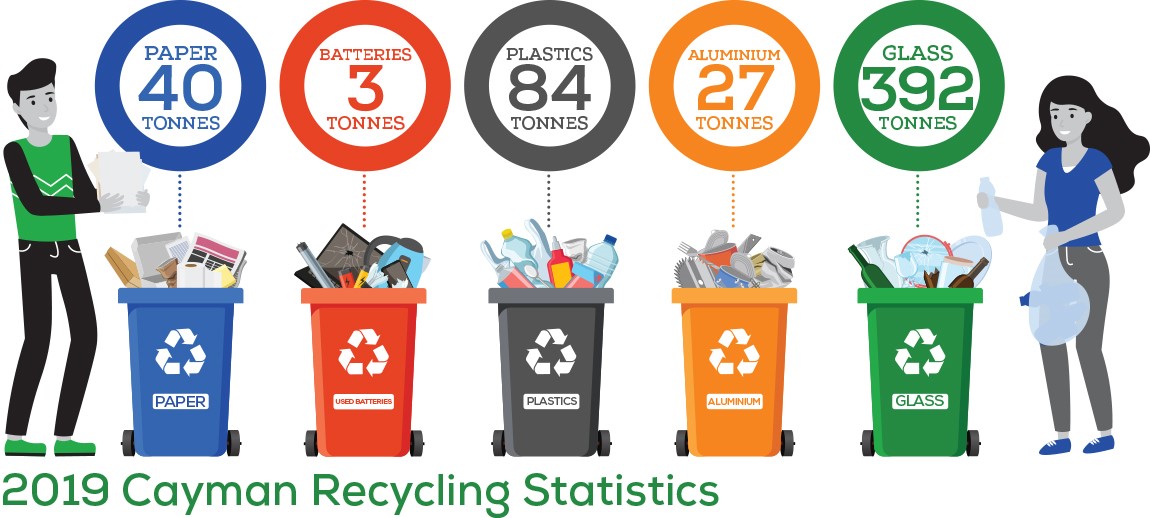
For those residents who already diligently separate their plastics, glass bottles and aluminium cans for recycling, they might wonder how that process could change once the integrated solid waste management system is introduced on Grand Cayman. In conjunction with a number of new facilities, recycling remains an essential component to reducing waste under the new system.
The Cayman Islands National Solid Waste Management Strategy follows a waste management hierarchy that evaluates processes for dealing with waste from most favourable to least favourable: reduce, reuse, recycle, recover, dispose.
Because recycling also has an environmental impact, the waste hierarchy places reduce and reuse above recycle. If single-use items must be purchased, recycling is the next best option. In Cayman, aluminium, plastics 1 and 2, paper, car batteries, electronic waste and waste oils are shipped overseas for recycling, while glass bottles are crushed into aggregate to be used locally. The Cayman Islands Brewery also sanitises and reuses any of its bottles returned to its location in Red Bay or to the Liquor Outlet on Eastern Avenue.
Under the new system, the responsibility for collecting waste and recyclables remains with the Department of Environmental Health. Residents and visitors to the Cayman Islands will continue to deposit recyclables in the designated bins located at supermarkets across Grand Cayman. Private firms, such as Island Waste Carriers and Junk, will continue to be available for household or commercial collection of recyclables.
Although most people are focused on household recyclables in their daily lives, it is actually scrap metal, including end-of-life vehicles, construction and demolition waste and yard waste that form the bulk of Cayman’s recyclable waste. The new system includes dedicated facilities for yard waste composting, scrap metal processing and construction and demolition recycling.
Sitting below recycling in the waste hierarchy is recovery. For any waste items that cannot be avoided, reused or recycled, the waste hierarchy recommends generating electricity from the safe combustion of those products through an energy recovery facility.
Although some believe that energy recovery facilities compete with recycling, the waste hierarchy demonstrates that they are both important strategies to reducing landfill waste. Rather than these energy recovery facilities' discouraging recycling, statistics from the United States and Europe actually demonstrate a positive correlation between energy recovery facilities and recycling rates.
Sweden, for example, is a leader in energy recovery while recycling approximately 49% of its waste. Currently, the Cayman Islands recycles less than 1% of its total waste.
Because the energy recovery facility represents a significant infrastructure investment, ensuring efficiency and longevity is essential. All remaining waste, including items that cannot be recycled, will be treated through the energy recovery facility. Most other types of plastics — like those used to make bubble wrap, yoghurt containers, snack wrappers and car bumpers — will fall into this category.
--------
This article appears in print in the December 2020 edition of Camana Bay Times.